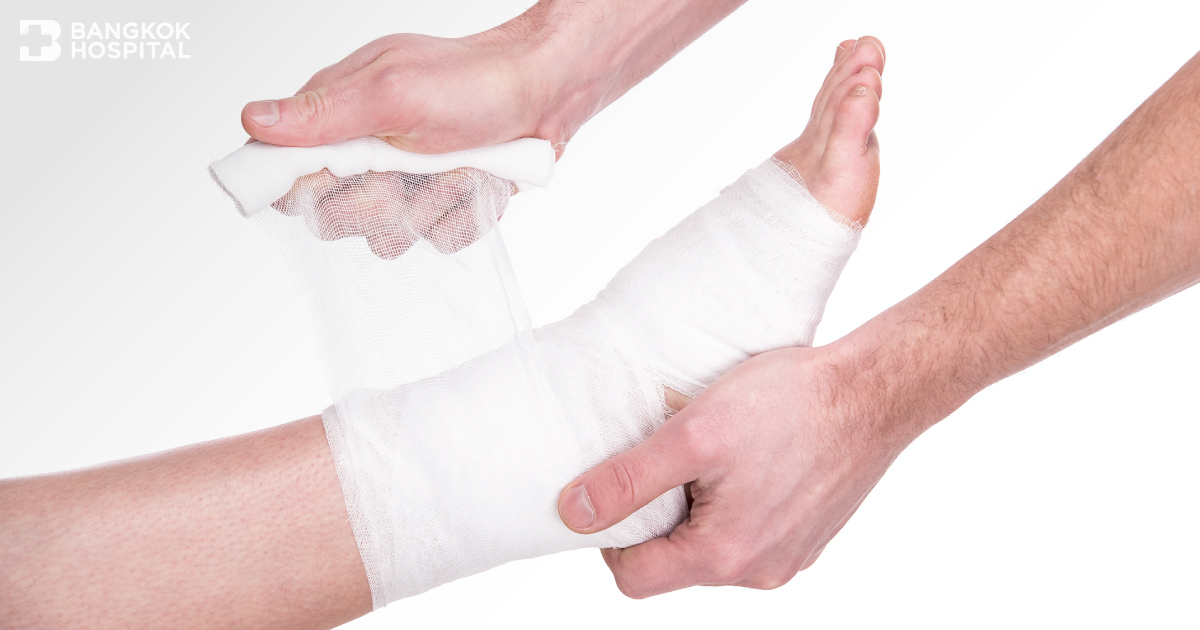For patients with diabetes, all wounds are a serious health concern and require careful attention. Even small cuts and insect bites can become serious if left untreated. Diabetes can cause wounds to heal more slowly. This increases the risk of infections and other complications. Therefore, it is important to know what to look out for.
What is a diabetic wound?
Diabetic wound is the most common chronic wound. As a result of narrowed blood vessels, diabetic wound healing is impaired because less oxygen can reach the wound and the tissues do not heal as quickly. Also, high blood sugar destroys nerves, so patients are less sensitive to pain. With this loss of sensation, patients do not feel developing blisters, infections, or existing wound changes. Therefore, wound healing is complicated not only by the fact that patients do not feel wounds as they occur, but they also have no pain to alert them that a wound is getting worse. Moreover, impaired sweating, dry and cracked skin, toenail infections, and foot deformities are more commonly found in people with diabetes, increasing the risk of a bacterial infection.
Why are foot ulcers common in diabetics?
Neuropathy occurs when blood vessels supplying nerves with oxygen and nutrients are damaged. The feet of a person with diabetes are particularly susceptible to neuropathy because of insufficient blood flow. If you cannot feel your feet, you may not know you are hurt, and a small cut or sore can turn into something bigger.
At-risk patients
Patients who are at higher risk are the one who have diabetes for around 5-10 years. The longer you have diabetes, the higher the risk of diabetic wound.
Characteristics of diabetic wound
- Occurs in patient with diabetes
- Commonly located at hand, foot, or weight bearing surfaces
- Slow healing or do not heal
The risks of diabetic wound
- Tend to become chronic wound – especially when blood sugar level is higher than normal.
- Healing is slow. People with diabetes are more likely to develop peripheral vascular disease. This causes your blood vessels to narrow, which reduces blood flow to the limb. As a result, less oxygen can reach the wound and the tissues do not heal as quickly.
- Peripheral neuropathy – Patients may not be able to feel wounds when they occur.
- Foot deformity – Calluses occur more often and build up faster on the feet of people with diabetes. Calluses, if not trimmed, get very thick, break down, and turn into ulcers.
- Damage to autonomic nerve fibers – leads to dry skin and loss of sweating.
- Amputation – A wound that does not heal can quickly become life-threatening. If the wound does not respond to treatment, such as with a severe or extensive diabetic foot ulcer, amputation may be necessary.
Diagnosis
- History taking and wound examination – location of the wound, peripheral pulse, evidence of neuropathy, foot deformity
- Doppler ultrasound – measuring blood flow to the foots
- Ankle-Brachial Index (ABI) – compares the blood pressure measured at your ankle with the blood pressure measured at your arm. A low ankle-brachial index number (<0.9) can indicate narrowing or blockage of the arteries in your legs.
- Transcutaneous O2 measurements (TCOM) – is a non-invasive method of measuring the oxygen level of the tissue below the skin. This helps the doctor to determine the best treatment option.
Treatment
- Standard wound care treatment as recommended by a specialist
- Control/correct causes of diabetic wound such as high blood sugar level, peripheral vascular disease, neuropathy, proper shoes, high pressure areas
- Hyperbaric Oxygen Therapy (HBOT) – enhances the body’s natural healing process by inhalation of 100% oxygen in a total body chamber, where atmospheric pressure is increased and controlled. This increases tissue oxygen availability and promote healing. Patients will receive treatment in HBOT chamber around an hour and a half per day.
How to promote long-term health and healing
- Control diabetes
- Wash your feet daily
- Inspect your feet daily
- Use a moisturizing cream or lotion on the tops and bottoms of your feet to keep the skin soft. Avoid putting lotion between your toes.
- Buy shoes that fit properly. Buy comfortable shoes that provide support and cushioning for the heel, arch and ball of the foot.
Any break in the skin especially at your feet is cause for concern, so if you are unsure about the wound, consult your doctor. The doctor can identify the wound and advise you on how best to care for it. The faster you get the appropriate treatment, the more likely you are to prevent complications.









